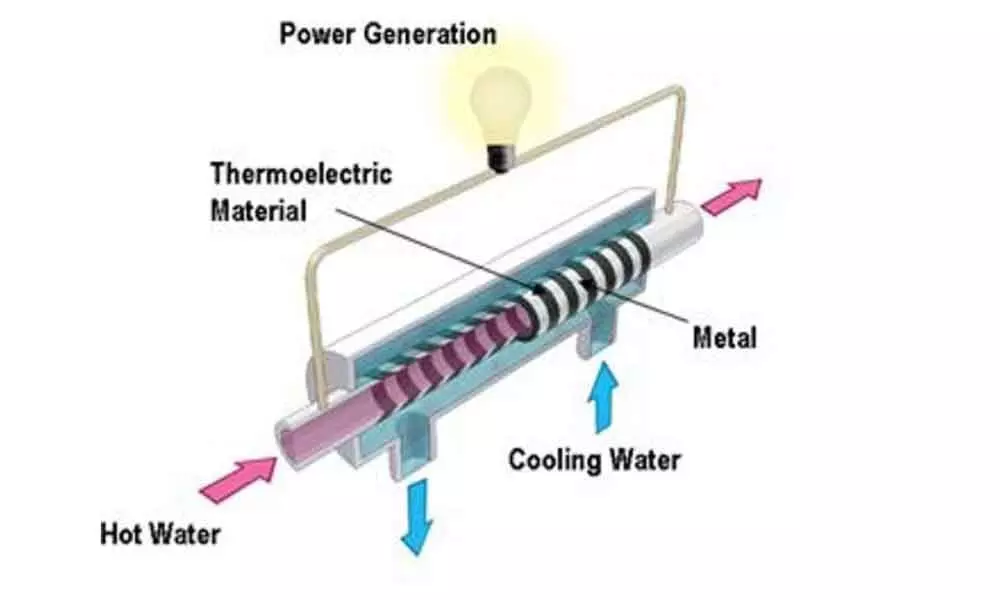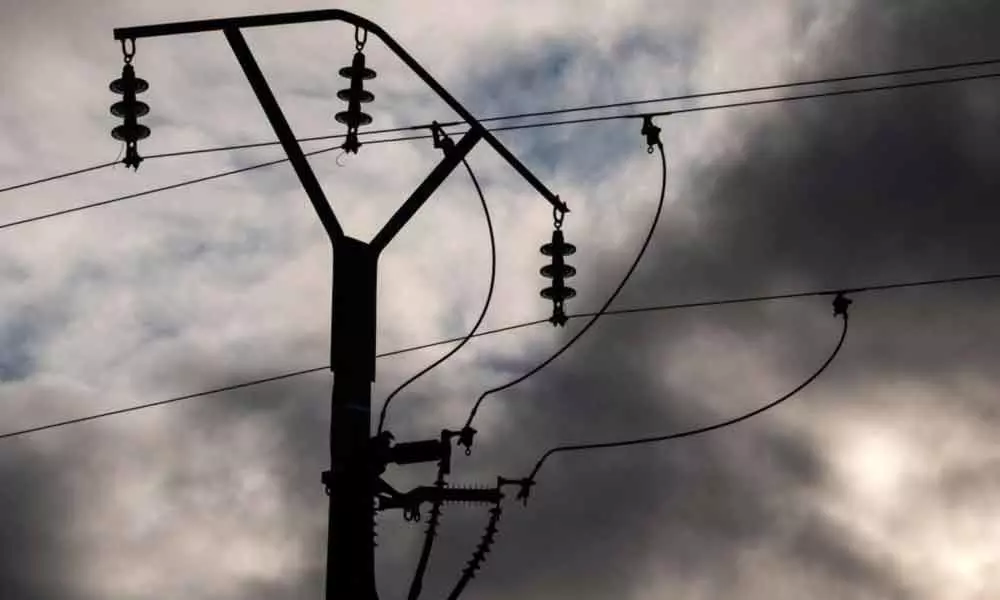Live
- Waste to Worth: Be Excreta Wise
- Officials told to resolve issues of differently-abled
- Israel orders ‘impossible’ evacuation
- Farmers plead for justice as govts betray them
- TDP committed to welfare of Christians: CM
- Collector Ansariya reviews development programmes
- CM orders clearance of diet bill dues to hostels
- MP Purandeswari assures to discuss with CM Naidu
- Police identify body delivered in parcel
- Kambala to join BJP today
Just In
Guwahati: IIT Guwahati develops materials to generate power from water

Guwahati: Researchers at the Indian Institute of Technology (IIT) Guwahati have developed new materials that can generate power from both stagnant and flowing water.
These new ways of producing energy on a small scale can be employed in household environments to support decentralisation of energy sources, according to the research published in the journal ACS Applied Nanomaterials. The researchers employed the nanoscale phenomenon called "electrokinetic streaming potential" to harvest energy from flowing water on a small scale, like water flowing through household water taps. They used another process called "contrasting interfacial activities" in which different types of semiconducting materials were employed to generate power from stagnant water.
A research team led by Kalyan Raidongia, from the Department of Chemistry at IIT Guwahati, noted that the impending energy crisis has arisen from the dual problems of dwindling fossil fuel reserves and environmental issues associated with the use of such fuel. This has led to considerable research in alternative energy sources such as light, heat, wind, ocean waves, etc, the researchers said.
The generation of energy from water in various forms - river flow, ocean tides, stagnant water, and even raindrops, is now known as "blue energy," they said. While hydroelectric power from rivers is the traditional form of blue energy, there have been efforts to harness the power of water in other ways in recent years. One out-of-the-box blue source is electrokinetic energy. "When fluids stream through tiny channels that are charged, they can generate an electrical voltage, which may be harnessed through miniaturised generators," said Raidongia.
Although the exploration of such electrokinetic phenomena and their possible use for energy conversion have been known for over half a century, they have not been harnessed because of low efficiency arising from the unsuitability of channels for the fluid stream. The humble efficiency of electrokinetic streaming potential based energy generating devices is attributed to the trade-off between high flow-rate and nanofluidic confinement, the researchers said. The team, including Jumi Deka, Kundan Saha, Suresh Kumar, and Hemant Kumar Srivastava worked on this novel research.
The findings demonstrate that power output can be improved by thousand times by attaining the best out of these parameters, the researchers said. The research team is currently working on such optimisation efforts. In order to extract power from stagnant water, devices were fabricated by employing doped graphene flakes.
The complementary charge transfer activities of doped graphene flakes based devices generate power just upon dipping in any kind of water source, like lake, river or seawater. Graphene is the sheet produced by oxidation followed by reduction of natural graphite flakes. "What we have done is modified graphene in such a way that its electron density is manipulated; even stagnant water in contact with this form of graphene can produce energy," said Raidongia.
The researcher doped graphene oxide with boron and nitrogen, separately, loaded the two forms of graphene into two filter papers that served as electrodes in an electrochemical cell. Dipping the two filter papers into water produces potential up to 570 millivolt, which was stable for 80 hours the researchers said. "We improved the power generated by varying parameters like coating area, the extent of doping, annealing temperature, and ionic conductivity of the medium," said Raidongia.

© 2024 Hyderabad Media House Limited/The Hans India. All rights reserved. Powered by hocalwire.com








